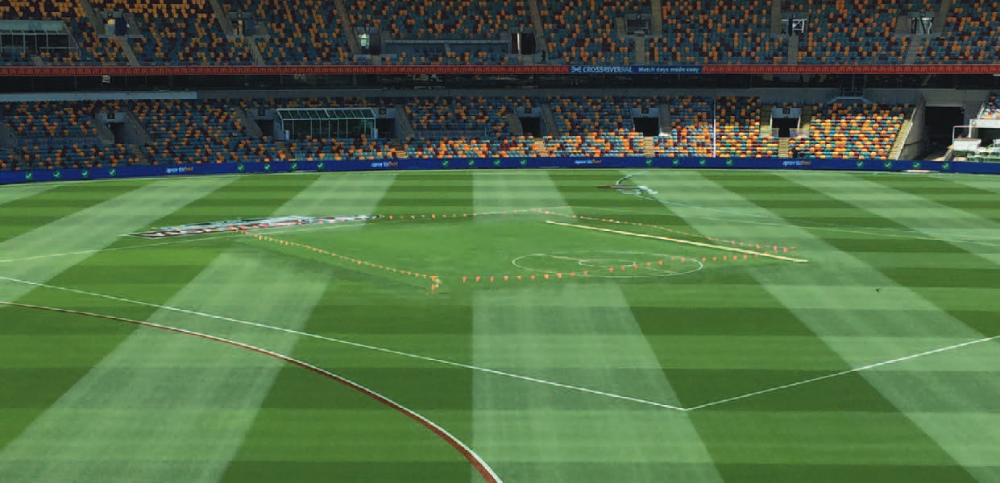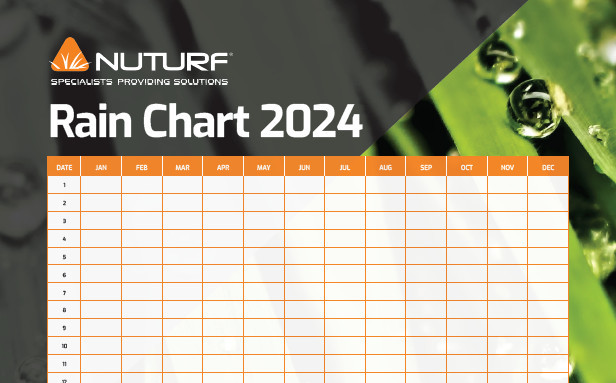New Ways to Manage Spring Poa
A 2015 North Carolina State University article on Poa annua made three succinct points in the very first paragraph; We have been chasing this target for a long time, we have learned plenty in that time, and perspective on progress we have made depends on who you ask and exactly which turf management situation you are focusing on. The article did have a golf focus, but this summation would appear just as relevant to the Australian sports field sector as local perspective suggests we are still working on it and the learning very much continues. However, in the context of the new product described in this note the positive here is that progress now includes one further step forward. This progress does come with a moderating comment that consistent with history to date it appears further improvements will likely come in similar smaller increments – not giant leaps, but progress is always welcome.
The power of Poa annua genetics

Poa annua has shown itself to be highly genetically plastic. Its ability to change its genetic composition in response to different selective pressures is truly impressive. Whether it be through physical anatomy, chemical detoxification or annual v perennial lifecycles, it has shown a remarkable ability to evolve to meet most challenges we have thrown at it. This is a true example of Charles Darwins theory in real-time. Of course it’s not the only example, we have a number of weeds we deal with that have shown up in our resistance considerations, but the focus given to poa in the professional turf management arena, and the measures we take to eradicate it, regulate it, or somehow put it at a competitive disadvantage to provide a co-habiting turf a more unobstructed opportunity make this a very central figure in our collective thinking.
Sportsfield Poa management to date
When we look at poa chemical options to date, we see reality delivering either a pre-emergent focus with a post em clean up plan for escapes, or a post emergent focus using a narrow base of chemistries. For pre-em approaches the Group D options have dominated, group G appears occasionally in specific circumstances and one of the historic Group K options (Propyzamide) was later moved to Group D through functional similarity so we were narrow in our base there too. We have certainly had a more recent (and very welcome) addition with Indaziflam (Group O) to get another mode of action in the mix but the bulk of treatment in the last 10 years would clearly be the D’s.
For the post-ems the group B’s have been given a decent run. When first introduced these chemistries were superb. Quite different in the way they were slow moving, low dose types with unusual activity spectrums that could cover anything from broad leaves to grasses to sedges. Poa was a common target across many and there were many happy turf managers with these exceptional tools.
Reading some Croplife Australia communications you will see Group B herbicides described as the most likely Mode of Action to develop resistance with global prevalence described as prolific and extensive. They are a victim of their own success really as they have been so good. Given the genetic potential of poa and resistance issues being known and potentially widespread, any additional tools that represent alternate modes of action become very important. Enter Xtron herbicide.
A further step forward - Xtron
In 2019 the active ingredient amicarbazone received a turf registered label with Xtron 700WG herbicide. Xtron was delivered via a partnership at the time between Nuturf and Arysta Life Sciences. This was an important development for our industry as we needed this to keep moving incrementally forward to maintain some momentum in catching our elusive target. Amicarbazone is a powerful group C herbicide in the Triazinone sub family. Group C herbicides work by interfering with one of the processes by which plants fix energy from sunlight – a distinctly different target to that used by the group B mode of action. As such it is an appropriate alternative to achieve genuine chemistry rotation in the area of Poa annua management.
Group C herbicides are an interesting family with some behaviours that are important to understand. The most important of which is probably post application movements. They favour xylem (upwards) movement so the actual placement of the product at the time of application will either maximise the potential treatment or greatly hinder and limit the treatment. Dedicated studies have shown up to 50% of the active ingredient can be moved into the plant via the foliage in the first 3 hours after application. Studies have also shown the root system is an efficient and desirable entry pathway for the molecule. Therefore, for best results the application planning and execution should look to capitalize on both by using a water volume and droplet that covers foliage yet allows droplets to roll the length of the foliage to place a portion at the base of the plant. Placement there supports some foliar uptake on the way through but then if a light irrigation occurs the unprocessed portion of the active can be placed around the top of the rootzone ready for uptake by feeder roots to complement that earlier foliar absorption.
Where this requires some thinking is an honest assessment must be made of what sort of barrier the existing foliar canopy represents to this sort of placement objective. Low water volumes applied to a tight sward turf can result in a very high placement that is inefficient or at worst ineffective. It can also produce an application where 50% or less of the foliage itself is actually treated. Offering a single application guidance across the variety of sites the product may see therefore becomes a challenge. The registered label leaves open the ability to assess and tailor applications to site conditions i.e. label recommends minimum 400L application volume – use plenty more when the canopy requires it.
Soil moisture, spring timings and adjuvants
Pre application soil moisture recommendations and not applying to waterlogged, droughted or otherwise stressed turf is advice you commonly see on product labels. It certainly remains relevant here but we need to highlight the soil moisture piece a bit more than usual, and we need to highlight it before application, at the time of application and for approximately a 10 day window post application. Soil moisture has been shown to be a critical determinant of success hence the specific focus. The 10 day period post application is a time when a lot is happening inside the plant but symptoms may not be readily observable - yet. The speed and efficiency with which it all happens can vary based on temperature, soil pH, post application moisture and successful contact with root tissue. On some sites symptoms have been seen in 3-4 days, on others very little till 10-12 days after application. It can vary and does not necessarily relate to ultimate treatment success.
One local trial performed in September 2019 with customers in metropolitan Sydney showed faster symptom expression in areas within the treated site that retained greater moisture so this was a rather useful local insight.

Amicarbazone was registered in turf in the US some time ago so we have the benefit of taking on board the learnings they have generated up till now. Seasonal timing of applications has proven to be very important with one major learning being the preference for spring programs as opposed to autumn. Applications timed with warming soils, warming air and increasing daylength seem to provide greater consistency. In terms of adjuvants no recommendations are made for their inclusion on the product label.
How Nuturf can help you
This is a product that Nuturf played an integral role in bringing to market through its R&D capabilities and national network. The collaborative arrangements that delivered this registration was a significant investment from Nuturf as part of its commitment to our industry and was driven by the recognition the team had on tools needed to advance our management of poa.
Our staff can help you plan an Xtron strategy talking through the measures known to optimize treatment success to give you the best possible outcome. Since registration we have continued to learn about the product use under local conditions and can share this knowledge with you. As you think about late winter and spring activities feel free to talk to your Nuturf representative to learn more about Xtron 700WG herbicide.






